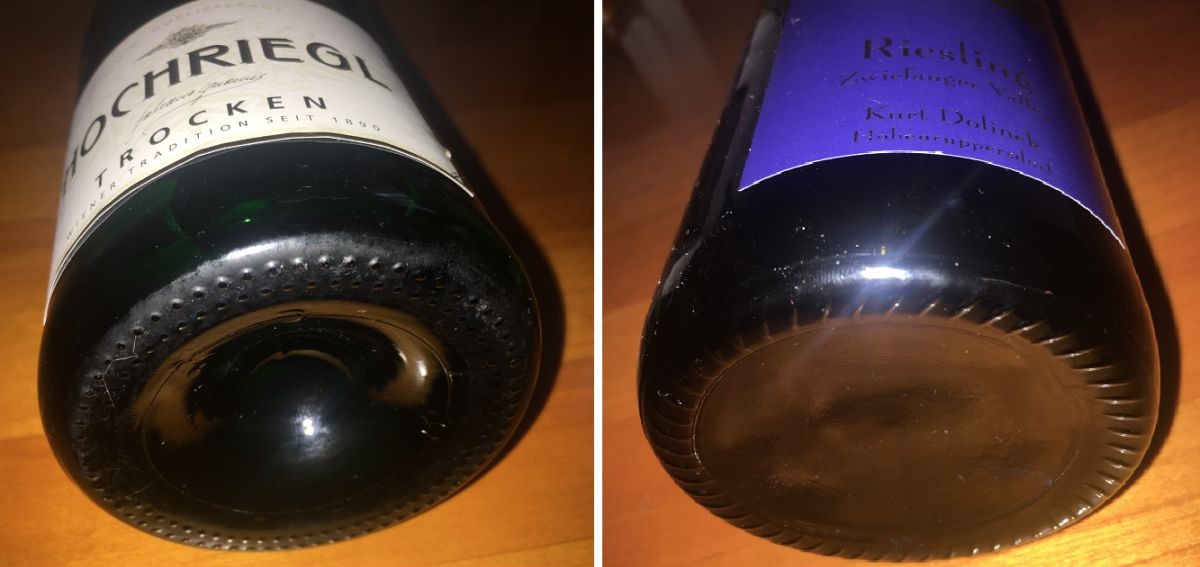Many wine and especially sparkling wine bottles have an indentation in the base (also known as a bottle indentation, bottle indentation or culot de bouteille). The bulge probably dates back to the early days of production, when bottles could not be produced in exactly the same shape as they are today and this indentation provided better stability. According to another version, the bulge was created during glass blowing because the bottle was turned over a wooden stick. The fact is that the curved base transfers the pressure (especially with sparkling wines) better to the walls and ensures that the base of the bottle does not break. The argument that this made it possible to pack the bottles "Bouteilles stockées sur Pointes" (head to base) more stably is also valid.

The picture on the left shows a sparkling wine bottle with an indentation, the picture on the right a wine bottle without an indentation.
Practical advantages
Another advantage of the indentation is that during bottle ageing, particularly in the case of red wines, the precipitates get into the small groove around the indentation. This prevents the deposit from being stirred up when pouring. If the indentation is deep enough, it can be used as a support for the thumb when pouring. The indentation is obligatory for Bordeaux and sparkling wine bottles, but also for many Burgundy bottles, Schlegel bottles and balloon bottles. For the manual remuage of a sparkling wine, many producers attach a cellar point to the bottom of the bottle as a positioning aid for the remuageur.
Champagne house Roederer
There is an interesting story about the bottle characteristics of the Roederer champagne house. Special champagne bottles were produced for the Russian Tsar Alexander II (1818-1881) for the Cristal brand, which is still produced today. The crystal glass had to be transparent so that any poisoned champagne could be recognised quickly. There was also no indentation in the bottle to prevent a small explosive device from being placed in the indentation at the bottom of the bottle. The bottles for Cristal are still produced in this way today.
Pictures: © Norbert F. J. Tischelmayer
Voices of our members

As honorary chairman of the Domäne Wachau, it is the easiest and quickest way for me to access the wein.plus encyclopaedia when I have questions. The certainty of receiving well-founded and up-to-date information here makes it an indispensable guide.
Hans-Georg Schwarz
Ehrenobmann der Domäne Wachau (Wachau)